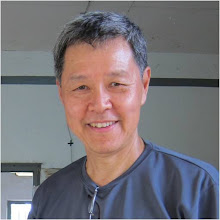The CYP1A gene family is a very old one, and the enzyme is found in all vertebrates. In humans there are 2 paralogous members of the family; CYP1A1 expressed predominantly in the lung, and CYP1A2 expressed in the liver.
The CYP1A enzymes very likely evolved to deal primarily with environmental polycyclic hydrocarbons. The activity of CYP1A2 varies considerably and may be easily phenotyped using caffeine as a probe substrate to generate a metabolic ratio.

The metabolic ratio in the population displays a broad unimodality which disguises the fact that the gene is highly polymorphic. The activity of the enzyme is not easily predicted by the genotype as the enzyme is very easily induced by exposure to environmental hydrocarbons. The gene haplotypes may in fact be associated with low or high inducibility of the enzyme.
Inhaled hydrocarbons through cigarette smoking is a common inducer of CYP1A2. In Singapore we are also seasonally exposed to high levels of environmental hydrocarbons as a result of forest fires in the region. The maximum exposure tends to be during dry periods, and when the prevailing winds blow in from the West. These tend to be during the July-November period. It is currently unclear to what extent this has affected our population average CYP1A2 activity.
The most comprehensive examination of CYP1A2 in Chinese is that reported by Chen et al 2005. They were able to demonstrate that haplotype pairs 10 and 13 are responsible for high CYP1A2 activity, and haplotype pairs 5, 8, 9, 12, and 15 are responsible for low CYP1A2 activity in Chinese subjects. These haplotype pairs account for approximately 6% and 25% of the population respectively.









No comments:
Post a Comment